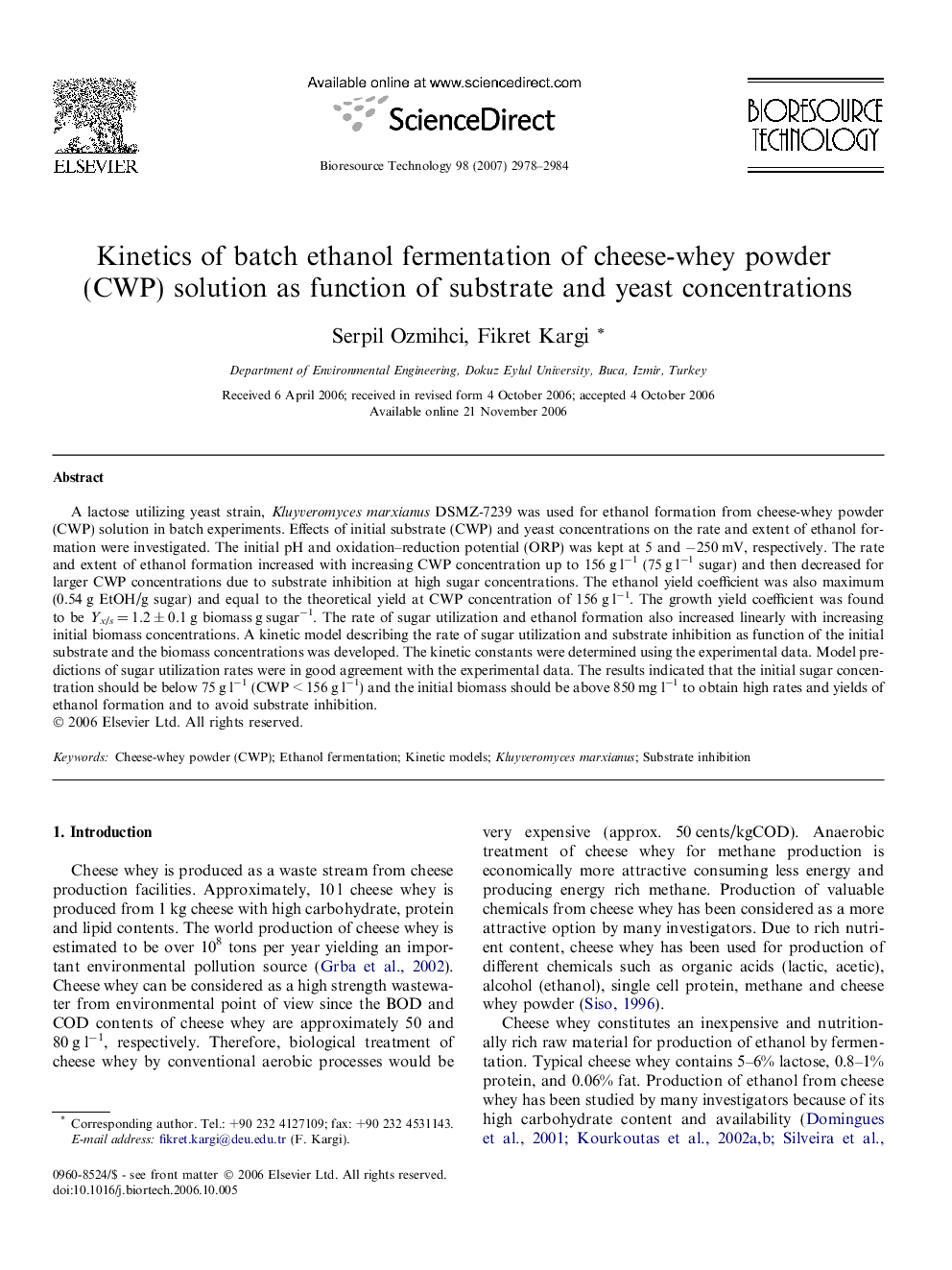| Article ID | Journal | Published Year | Pages | File Type |
|---|---|---|---|---|
| 684937 | Bioresource Technology | 2007 | 7 Pages |
A lactose utilizing yeast strain, Kluyveromyces marxianus DSMZ-7239 was used for ethanol formation from cheese-whey powder (CWP) solution in batch experiments. Effects of initial substrate (CWP) and yeast concentrations on the rate and extent of ethanol formation were investigated. The initial pH and oxidation–reduction potential (ORP) was kept at 5 and −250 mV, respectively. The rate and extent of ethanol formation increased with increasing CWP concentration up to 156 g l−1 (75 g l−1 sugar) and then decreased for larger CWP concentrations due to substrate inhibition at high sugar concentrations. The ethanol yield coefficient was also maximum (0.54 g EtOH/g sugar) and equal to the theoretical yield at CWP concentration of 156 g l−1. The growth yield coefficient was found to be Yx/s = 1.2 ± 0.1 g biomass g sugar−1. The rate of sugar utilization and ethanol formation also increased linearly with increasing initial biomass concentrations. A kinetic model describing the rate of sugar utilization and substrate inhibition as function of the initial substrate and the biomass concentrations was developed. The kinetic constants were determined using the experimental data. Model predictions of sugar utilization rates were in good agreement with the experimental data. The results indicated that the initial sugar concentration should be below 75 g l−1 (CWP < 156 g l−1) and the initial biomass should be above 850 mg l−1 to obtain high rates and yields of ethanol formation and to avoid substrate inhibition.
